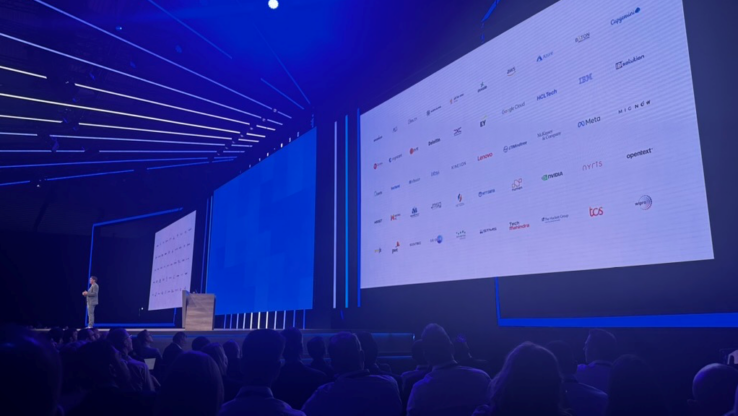
The SAP Low-Code Portfolio: SAP Build, SAP Fiori Elements and SAP BAS
When looking at Low-Code tools and services in the SAP BTP environment, you can currently identify three essential building blocks which make up the SAP Low-Code portfolio: SAP Build, SAP Fiori Elements & SAP Business Application Studio (BAS). The most prominent representative of these is certainly SAP Build, alongside Fiori Elements and Business Application Studio, which recently gained traction in discussions and articles about Low-Code. Reason enough for our Head of Development Jakob Frankenbach to take a closer look at them.
SAP Build – three powerful tools for citizen developers
SAP Build is a suite of Low-Code tools primarily designed for citizen developers, enabling companies to develop business applications for their digital workplace themselves in order to digitize and (partially) automate business processes independently without having to rely on the availability of scarce IT resources. SAP Build essentially consists of the following three services:
1. SAP Build Apps
Initially, this was the low-code platform AppGyver, which SAP acquired in 2021 and subsequently transferred to the SAP Build Suite. SAP Build Apps enables responsive web applications to be created using visual editors. Beyond assembling the pure UI elements, the tool provides options for configuring data sources and data variables thus integrating the applications with existing backend systems. Writing code is not required, although the tool features various extension points which allow additional functionality to be implemented using native JavaScript.
2. SAP Build Process Automation
Formerly known as SAP Workflow Management and SAP iRPA, SAP Build Process Automation is used to map business processes in a graphical interface using BPMN-oriented structural elements which are then automated by the underlying workflow engine of the tool. Nevertheless manual intermediate steps such as approvals or form-based input of information can be added on a purely configurable basis. Corresponding simplistic UIs can likewise be created without source code, which end users can then utilize to input the above-mentioned manual entries during the subsequent process flow. Even decision tables and integration of external data sources can be configured via the visual UI. In more complex use cases, additional logic modules or Pro-Code UIs may be added.
3. SAP Build Work Zone
SAP Build Work Zone is also an already well-known product, formerly talked about as SAP Fiori Launchpad (SAP Build Work Zone Standard Edition) and SAP Work Zone (SAP Build Work Zone Advanced Edition). SAP Build Work Zone allows the creation of a digital workplace for a company’s employees. This digital workplace is to be understood as a central entry point through which everyone has access to the applications and tools relevant to them in the digital environment of their area of responsibility. In other words, this is the central hub for the solutions built using SAP Build Apps and SAP Build Process Automation. The SAP Build Work Zone is further enriched by dashboarding functionality and tools for communication and collaboration. The SAP Build Work Zone is provided on a solely configurative basis, offering the option of providing and integrating customized content using integration cards developed using Pro-Code, for instance.
At sovanta, we have been working intensively with these various SAP Build Suite tools and services over an extended period and are thoroughly impressed by their practicality. The speed of realization of use cases is tremendous. Functional prototypes which are ready for use within a few hours or days are the rule rather than the exception. However, it is important to note that the solution concept is strictly reliant on the tools’ capabilities. Once an attempt is made to break out of the standard functionality, as possible via the aforementioned Pro-Code extension points, complexity and effort increase significantly. It is therefore advisable to utilize SAP Build for the implementation of smaller, clearly defined use cases which are 100% standard-compliant and which will presumably remain so in the medium to long term.
SAP Fiori Elements
Before going into greater detail concerning SAP Fiori Elements, a few introductory remarks are in order to describe the SAPUI5 framework. SAPUI5 is used to develop web applications based on the SAP Fiori Design System. Traditionally, SAPUI5 applications are Pro-Code applications, whereby software developers write a corresponding JavaScript/TypeScript code using predefined SAPUI5 components of the framework, enrich them with additional business logic and ensure the integration of the relevant backend interfaces, which are usually OData services.
Fiori Elements is a library within the SAPUI5 framework that extends it in a declarative way. Therefore, Fiori Elements defines several of default floor plans and layouts that represent typical scenarios for Fiori applications, such as a tabular list view or a detailed/profile view of individual entities. Beyond this, there are defined metadata annotations available for addition to OData services (on the backend side), whereby an OData endpoint can be enriched by further information detailing how the returned entities can be mapped against a specific floorplan. A SAPUI5 application with Fiori Elements therefore calls an endpoint and receives not only business data back from the OData service but also the annotated metadata, which is interpreted and converted into a corresponding UI at runtime.
The advantages of this approach are comparable to those of SAP Build Apps. A developer who is familiar with the functionality and syntax of Fiori Elements can implement functioning applications, including integration with data endpoints, within a few hours; significantly reducing the effort required compared to the classic Pro-Code approach of SAPUI5. That said, similar restrictions apply as with SAP Build Apps. To achieve speed and cost savings, the predefined floor plans and layouts must be followed. These may cover the classic use cases, yet the limits of what is possible can quickly be reached when working with very complex applications. Here, Fiori Elements does offer extension points that can be used to add Pro-Code functionality, although this option should also be used cautiously, as you will otherwise all too soon find yourself in convoluted and complex workarounds surrounding the framework, leading to a rapid loss of the efficiency advantage. In contrast to SAP Build Apps, SAP Fiori Elements is not a tool which enables the outsourcing of development work to citizen developers.
Business Application Studio
Similar to SAP Fiori Elements, the SAP Business Application Studio is a tool initially associated with Pro-Code, which in recent times has also been increasingly mentioned in the context of Low-Code. The Business Application Studio (successor to WebIDE) is a service of the SAP Business Technology Platform (BTP) that provides software developers with a browser-based and preconfigured development environment to create applications on the SAP BTP. Consequently, software developers no longer have to set up their development environment locally using their hardware, rather they only need a web browser to access it online from any end device.
The SAP Business Application Studio does not just function as a classic development environment in the sense of an application in which source code files can be read and written, enriched with various shortcuts and tools for efficient code navigation and auto-completion. Instead, the SAP Business Application Studio includes a growing catalogue of wizards and code generators. Here, software developers navigate through various configuration steps in accordance with each use case, in which configuration of e.g. external data sources, custom data structures or entire UIs (based on floor plans) is possible on a form basis. As soon as all the necessary entries are made, the Business Application Studio generates the executable code required for the configured scenario. Applications for very simple use cases can, under ideal circumstances, be generated without writing any source code. In most cases, the result of the wizard serves as a prototype which software developers can then extend and refine by using the Pro-Code method. The result is still a significant acceleration of the development process.
Fusion-Teams in the Low-Code World
Auch wenn, wie zum Beispiel oben zu SAP Build Apps beschrieben, alles rein konfigurativ über die UI gehandhabt werden kann, erfordert die Arbeit mit den SAP Low-Code-Tools dennoch ein tieferes Verständnis für technische Schnittstellen und Integrationsansätze sowie ein ausgeprägtes logisches und analytisches Denkvermögen. Aus diesem Grund empfehlen wir den Einsatz von Low-Code in sogenannten Fusion-Teams, d.h. Entwicklungsteams, die sich nicht nur aus Software Developers, sondern auch aus Citizen Developers zusammensetzen. In diesem Setup lassen sich viele Tätigkeiten von Citizen Developers durchführen, es wird aber gleichzeitig durch die involvierten IT-Experts sichergestellt, dass Anwendungen nachhaltig stabil, skalierbar aufgebaut und relevante Aspekte rund um das Thema Governance, wie beispielsweise IT-Sicherheit und Datenschutzkonformität, in angemessener Weise berücksichtigt werden.
Even if everything can be handled purely configuratively via the UI, such as described above with SAP Build Apps, working within the SAP Low-Code tools nonetheless necessitates a deeper understanding of technical interfaces and integration approaches alongside a strong logical and analytical mindset. This is why we recommend the use of Low-Code in so-called fusion teams, i.e. development teams consisting not only of software developers but also of citizen developers. This setup allows for many activities to be carried out by citizen developers, while at the same time, IT experts ensure the stability and scalability of applications in the long term as well as the appropriate consideration of relevant governance aspects relating to IT security and data protection compliance, for example.





